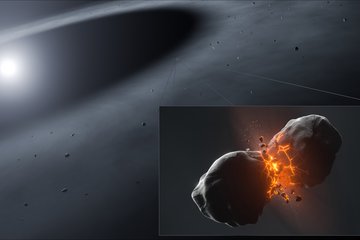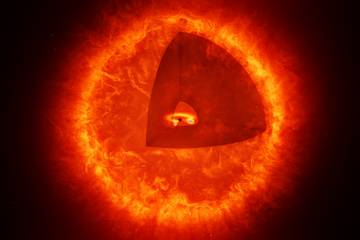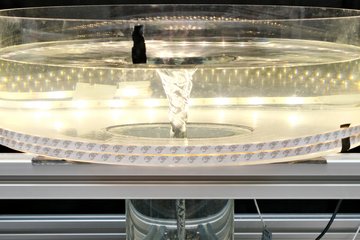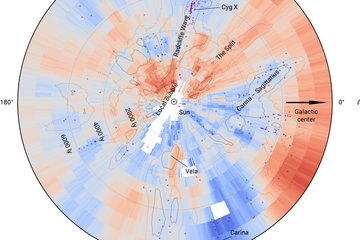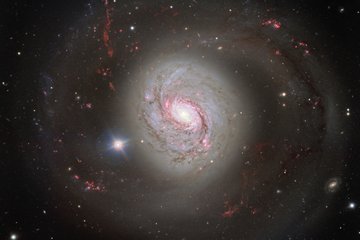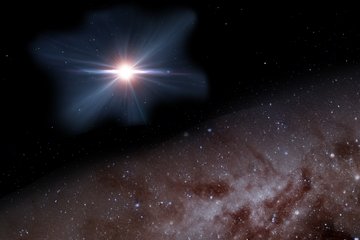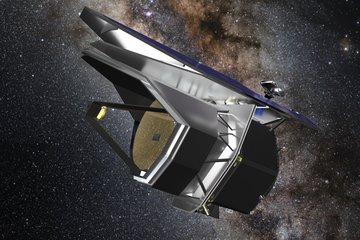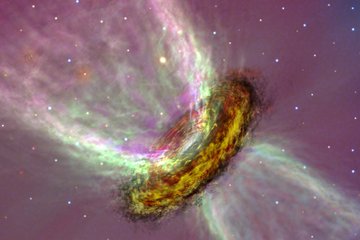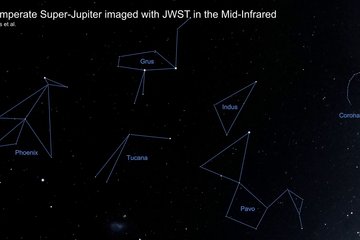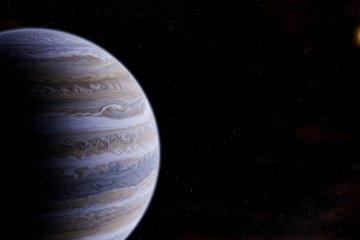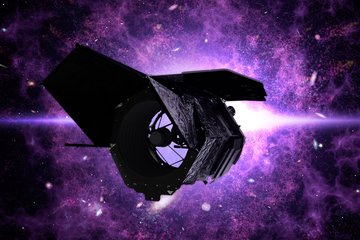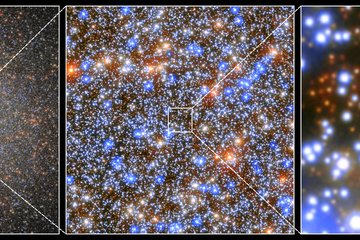Tidying up planetary nurseries
Progress in understanding the dispersal mechanisms of planet-forming disks
A group of astronomers, led by scientists from the Max Planck Institute for Astronomy, propose and have tested a mechanism that explains most of the properties observed in dispersing planet-forming disks around newborn stars for the first time. The key ingredients to this new physical concept are X-ray emissions from the central star and a calm inner disk, well shielded from the incident radiation. This approach explains the seemingly contradicting features observed in those dwindling transition disks that previous models have been unable to reconcile. This result, published in the journal “Astronomy & Astrophysics” today, is a big step to understanding the evolution from dusty disks to clean planetary systems like the Solar System.
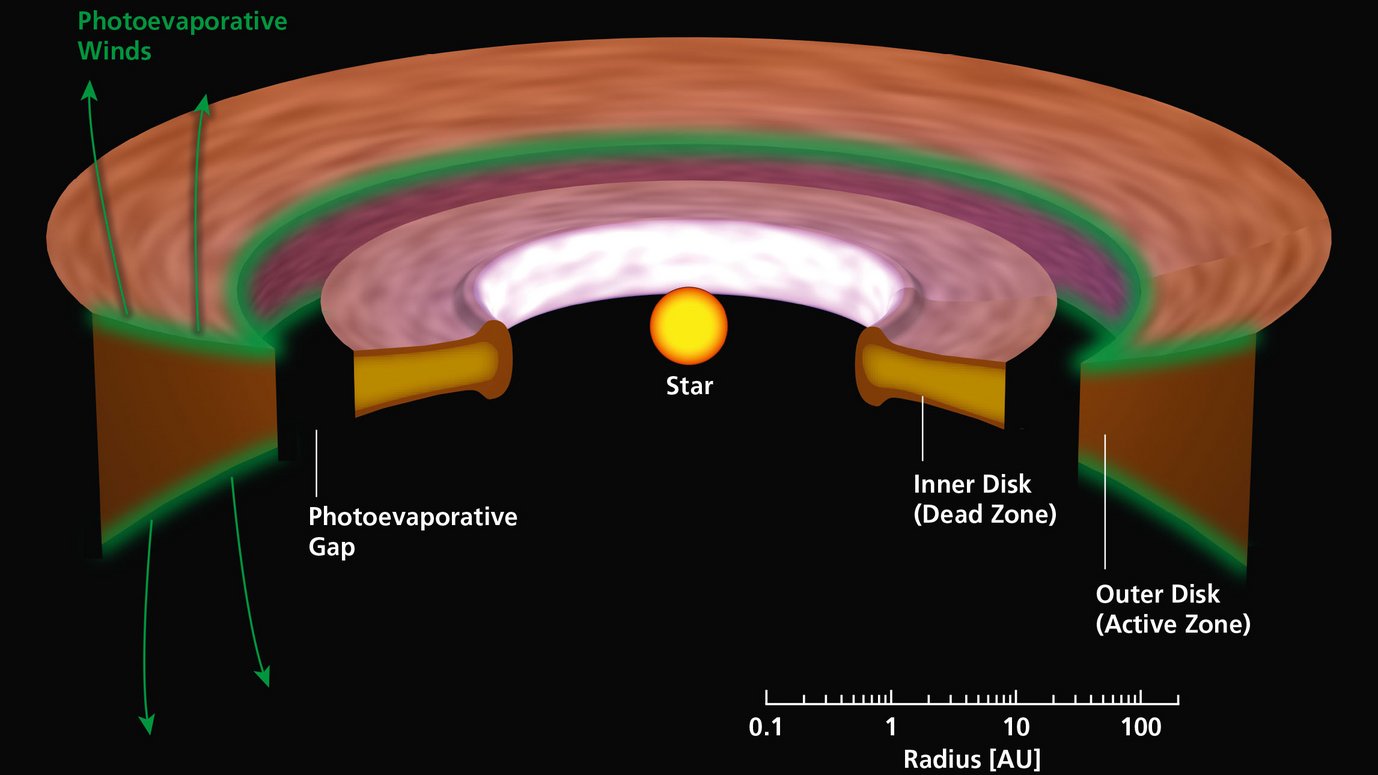
Planets form inside disks made of gas and dust. Each of those disks already gave birth to a new star, or, for that matter, to a predecessor that still has to ignite its nuclear fusion fire, called a protostar. When we look at the Solar System, we recognise that most of that material has long since disappeared. In recent years, research has reached a basic understanding of how these circumstellar disks lose their remnant gas and dust. With the advent of powerful telescopes, astronomers have even identified and studied those dissolving disks coined transition disks.
However, identifying the detailed physical processes remained unsuccessful. The theoretical concepts scientists have explored so far only reproduced a few of the observed properties at a time. Now, a research group led by astronomers from the Max Planck Institute for Astronomy (MPIA) in Heidelberg, Germany, proposes a new scheme that overcomes most of the disadvantages of previous approaches. “Earlier models failed to reproduce more than only a few of the observational results of transition disks,” says Matías Gárate, lead author of the underlying scientific article and scientist at MPIA. “However, we are now able to explain most of the properties that seem to contradict each other: a wide gap in the disk and a sustained accretion of gas and dust from a long-lived inner disk onto the central star.”
Properties of transition disks seem contradictory
Intuitively, it is hard to understand why almost all observed transition disks with a wide gap show signs of accretion. Accretion is the process that feeds the central star with gas and dust from the circumstellar disk. Before the gap opens, material from the thicker outer disk replenishes the inner sectors, sustaining the subsequent transport towards the central star. However, the reservoir is limited, which, in time, reduces the matter flow.
At the same time, X-ray emission from the star hits and heats the disk surface. The radiation gives rise to a wind that expels the then ionised gas into open space. This process is called photoevaporation. As soon as it is more efficient than the outside-in matter flow in the disk, a gap begins to open and disconnects the inner disk from the outer reservoir. At this point, the inner disk should empty very quickly via accretion and disappear rapidly. Accretion onto the star comes to a halt.
A dead zone can keep the disk alive
“We realised that to extend the lifetime of the inner disk and prolong accretion activity, we had to find a mechanism that reduces the inward drift of the gas and the dust,” Paola Pinilla points out, who is the “Genesis of Planets” research group leader at MPIA and a co-author of the paper. “One way of doing this is to include a generally accepted component of circumstellar disks, a so-called dead zone,” Timmy Delage adds, who is a PhD student at MPIA and another co-author of the research article.
A dead zone is a relatively calm annular region of a circumstellar disk where the random gas motion is reduced compared to other disk components. Consequently, friction between individual particles becomes almost negligible, making it difficult to reduce their orbital velocities, stabilising their orbits. Dead zones may manifest themselves when gas is insufficiently ionised and only poorly affected by magnetic fields. They can occur, for example, when the gas is dense enough to protect the deeper disk layers from ionisation by radiation hitting the disk.
Simulating the influence of dead zones
To verify if such a dead zone can explain the observational findings of accreting transition disks with wide gaps, Matías Gárate and his colleagues simulated their evolution in time. They constructed a physical disk model while varying the initial conditions for the dead zone and including X-ray irradiation to facilitate photoevaporation. “We were thrilled when we saw the results. A large majority of the simulated transition disks with a wide range of gap sizes retained a detectable accretion flow to the central solar-type star,” Gárate reports. This result demonstrates that dead zones can produce accreting transition disks with wide gaps in large numbers.
Although the result is a big leap in understanding what astronomers find with telescopes when looking at actual transition disks, it still falls short of reproducing the exact numbers. While observations appear to find approximately 3% of the transition disks to be non-accreting, the simulations produce more than ten times this fraction. Indeed, since computing power is limited, the model used in this study only reflects a simplified version of the real world and does not include all possible mechanisms suspected to occur in such disks. Some of them may even increase the longevity of the inner disk. On the other hand, it is well possible astronomers have to revisit some of their conclusions drawn from observations, and there may actually be more non-accreting disks than previously thought.
Visualising simulated transition disks
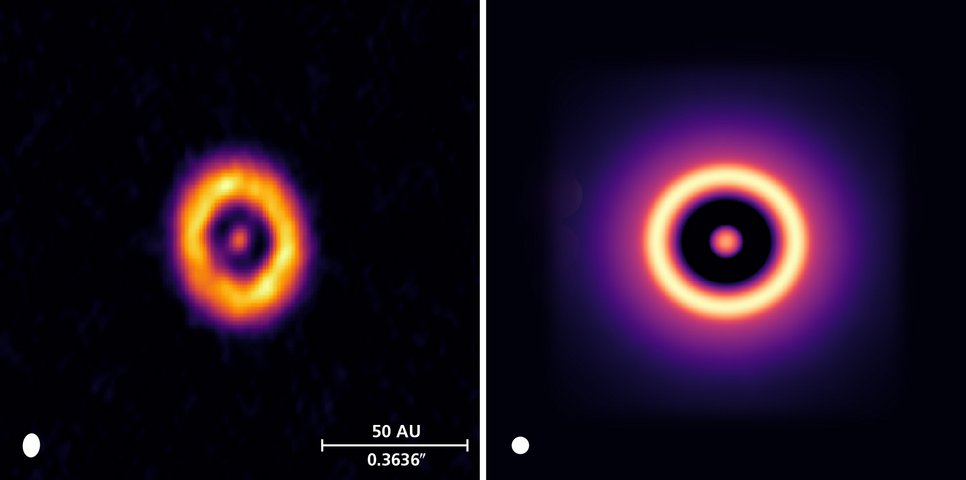
During their study, the MPIA-led team explored the accretion activity by focussing on the gas. Still, the dust can behave quite differently. When astronomers take images of such planet-forming disks, it is often the distribution of the dust they see radiating at millimetre wavelengths, frequently shaped in the form of concentric rings. Therefore, the MPIA astronomers investigated if their simulations also treat the dust realistically.
“To compare our calculations with highly resolved images of real transitions disks we had obtained with the ALMA interferometer, we produced a synthetic picture of one of the simulated dust disks,” says co-author Jochen Stadler, a master student at MPIA and Heidelberg University. The result is a stunning confirmation. The image of the computer-generated dust distribution shows the elements typical of transition disks: a small inner disk and an outer ring, both separated by a wide gap.
As often, the devil is in the details. While the structures appear to be a good match, the brightnesses disagree. The dust emission of the simulated transition disks is considerably fainter than one would expect from observations. Hence, the synthetic disks probably possess less dust than the real ones. However, the authors have a reasonable solution for this discrepancy. “We think this is a consequence of planet formation we have not included in our models,” Gárate points out. Studies frequently show that newly formed planets carve gaps along their orbits through the disk. Such rifts function like barriers for the dust drifting radially. Gárate adds: “It is well possible the planetary gaps escape detection by observation due to insufficient spatial resolution. If planets form in the inner disk, that may help prevent dust from accreting onto the central star. We will extend our models accordingly and explore if we can also solve this puzzle.”
Additional Information
The team consists of Matías Gárate (Max Planck Institute for Astronomy, Heidelberg, Germany [MPIA] and University Observatory, Faculty of Physics, Ludwig Maximilians University Munich, Germany [LMU]), Timmy N. Delage (MPIA), Jochen Stadler (MPIA), Paola Pinilla (MPIA and Mullard Space Science Laboratory, University College London, Dorking, United Kingdom), Til Birnstiel (LMU and Exzellencluster ORIGINS, Garching, Germany), Sebastian Markus Stammler (LMU), Giovanni Picogna (LMU), Barbara Ercolano (LMU), Raphael Franz (LMU), and Christian Lenz (MPIA).
MN


